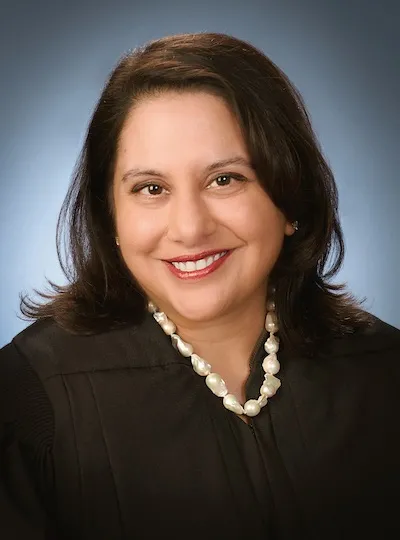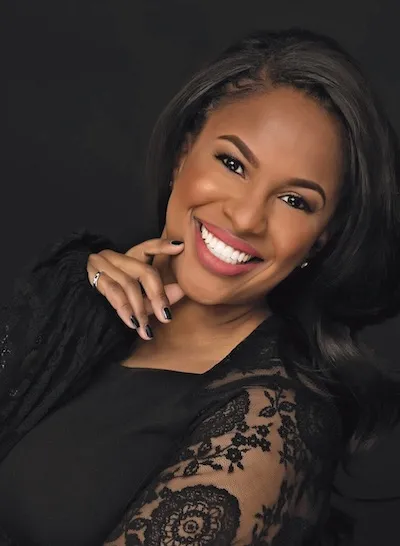Revised First-Year Curriculum Allows for New Courses and Smaller Classes

I remember the first day of law school as if it were yesterday. It was the fall of 1982, and I was sitting in Classroom II waiting to take Property I from Professor Richard Helmholz. I wasn’t really sure what to expect of law school—there were no lawyers in my family—and while I had read Scott Turow’s One L, it was just a book after all.
Of course, whether this memory is accurate is a different question, but it is the memory that I have. My new classmates and I were nervous as we waited for class to start. Eventually Professor Helmholz came into the room and got situated behind the podium at the front. He looked up, pencil in hand, and asked if Mr. Butler was there. I assumed there had been a family emergency and the Law School needed to get a message to Jamie Butler. That seemed like the natural explanation given that Professor Helmholz had not welcomed us to the Law School, had not offered an overview of the class, and certainly had not introduced himself in an effort to make a group of nervous 1Ls more comfortable as we set off together on this three-year journey.
Of course, “Is Mr. Butler here?” was exactly how my now friend and colleague Dick Helmholz wanted to introduce us to the Law School. He asked Jamie to state the facts of the first case—possibly Pierson v. Post, but I am not dead sure of that—and we were off and running. As you know, the 1L year is powerfully formative. I teach upper-level courses—and I take those very, very seriously, as do my students—but the 1L year is the one that law students remember forever. They take that year into the rest of their legal education and then into their professional lives.
We made substantial changes to the 1L curriculum this academic year. Elements of the Law will remain the same, but the big five first-year classes—Civil Procedure, Contracts, Criminal Law, Property, and Torts—will each be shortened from two three-credit classes that span two quarters to a four-credit class that lasts one quarter. That will give us space to add three new classes to Spring Quarter: a constitutional law course, a legislation course, and a brand-new transactions course. Our view—our hope certainly—is that we are creating a 1L curriculum that reimagines what a broad liberal arts education in law should look like.
Roughly two years ago, Dean Thomas Miles appointed a committee to consider the 1L curriculum. I chaired the committee, and five of my colleagues (Professors Emily Buss, Richard McAdams, Jennifer Nou, Geoffrey Stone, and David Weisbach) joined me. The committee did a deep dive on our own history, and that history made clear that one does not make curricular changes lightly, or, in the case of our Law School, very frequently. The last substantial, sustained change was made in 1977, and if you look at the curriculum from the very beginning—academic year 1903-1904—and work forward through the curriculum over the years, you are likely to see many of the classes that you took at the Law School.
The committee assessed class offerings at other law schools, interviewed faculty members individually, held sessions with students, and took a rough draft of a possible curriculum to the Law School Council to gain alumni feedback. We also held group meetings with the professors who teach or have taught the different 1L classes. Given schedules and the pressures of work, I think it’s possible some of the groups had never met before en masse to discuss their approaches to teaching a particular 1L class. We also met with administrators at the Law School to make sure that we understood how the 1L curriculum mattered for admissions and for career placement.
Our new 1L curriculum emerged from that process. We saw a call for three key changes: a desire to bring constitutional law into the first year; a need to have 1Ls spend more time on statutes and the legislative process; and a more direct effort to capture the planning, design, and structuring process that lawyers engage in as well as focusing on appellate cases and Supreme Court opinions. I tell my students that they should think of themselves as institutional engineers, and we wanted a course that reflected that conception.
Of course, it is easy to want more, but the trick was to figure out how to create space for these new courses while still continuing to give our students the grounding of the traditional 1L year. The Chicago 1L year has been 12 courses of three credits each—four each quarter—plus the legal research and writing program taught by our Bigelow Fellows. Those 12 courses were two quarters each of Crim, Contracts, Civ Pro, Torts, and Property, plus Elements of the Law in the fall and an elective in the spring. In the new curriculum, the key move is to convert the two-quarter, three-credit courses to one-quarter, four-credit courses. This year, in the fall, 1Ls will take Elements for three credits, Civ Pro for four credits, and Torts for four credits, along with the legal writing program. In the winter, the 1Ls will have three four-credit courses: Contracts, Property, and Crim, plus the continuing legal writing course.
Those changes have three key advantages. First, students haven’t been that thrilled to take a single exam at the end of two quarters, especially when they have had different professors each quarter. That structure goes away in the new curriculum. Second, and we discovered this in the middle of our process, by reducing the mandatory 1L classes by one-third—from six credits to four credits—we can reallocate teaching and begin moving 1L classes from two sections to three sections. That will make 1L class sizes much smaller, which we think will really enhance the classroom experience for the 1Ls. We are quite excited about that. And that will be particularly useful as the Law School takes a run at hybrid classes this fall while teaching through all of the disruptions created by the COVID-19 crisis.
Third, and finally, we have freed up space for a new Spring Quarter. Students will take four three-credit courses, plus legal writing. Students will choose one from a menu of constitutional law classes and take a revamped version of our legislation class to ensure that all of our 1L students get a strong grounding in statutes and statutory methods. They will take our new 1L course organized around transactions. And they will take an elective class from a designated list of courses as they have done in prior years.
The 1L curriculum committee was really thrilled with the faculty meetings that we had to discuss our proposal. The scope of the changes here is substantial, and it would have been easy to back away in favor of a more circumscribed set of changes. But that wasn’t the response from the faculty, and indeed, our colleagues seemed energized by the possibility of making broad changes to the 1L year. We think that students will get to see in the new 1L year more of the classes that drew them to law school in the first place. And of course students who want to pursue the traditional core 1L courses in further depth can do so through upper-level electives.
Fall Quarter is going to be extraordinary. Spring Quarter 2020 was a mad rush into Zoom. We felt as though we were walking away from everything that we knew about teaching into a completely new experience. That turned out not to be true: the core of my spring Platforms and Networks class was the same even though the medium of engagement was different.
And the same will be true of the upcoming fall. For 1L classes, it will be a grand dual adventure: new teaching methods and a new curriculum rolled into one. But even as the teaching tools evolve—as we move from the carefully sharpened number two pencils that Professor Helmholz brought to our Property class to dual-monitor, hardwired-Ethernet Zoom hybrid classes—the core of the 1L curriculum will remain the same. The University of Chicago Law School has never been about taking the easy path. We are, as a community, willing to roll up our sleeves and engage with each other, the issues, and the material that makes law so exciting.
I know that our new 1L students are ready for that. We did some Zoom mini-Greenberg seminars with them over the summer—mine was on Apple and antitrust—and I could feel the excitement in the virtual room. As I told them then: were it not for the fact that I get to come to the Law School every year, I would feel a little jealousy for the experience that is before them. And I probably still do, as you really do get only one first day at the Law School.
| Autumn | Winter | Spring |
|---|---|---|
| Elements of the Law (3 credits) |
Property I (3 credits) |
Property II (3 credits) |
| Civil Procedure I (3 credits) |
Contracts I (3 credits) |
Contracts II (3 credits) |
| Criminal Law I (3 credits) |
Criminal Law II (3 credits) |
Civil Procedure II (3 credits) |
| Torts I (3 credits) |
Torts II (3 credits) |
1L Elective (chosen from list of courses) (3 credits) |
| Legal Research and Writing (1 credit) |
Legal Research and Writing (1 credit) |
Lawyering: Brief Writing, Oral Advocacy and Transactional Skills (2 credits) |
| Autumn | Winter | Spring |
|---|---|---|
| Elements of the Law (3 credits) |
Contracts (4 credits) |
Constitutional Law Elective (chosen from list of courses) (3 credits) |
| Civil Procedure (4 credits) |
Property (4 credits) |
Legislation and Statutory Interpretation (3 credits) |
| Torts (4 credits) |
Criminal Law (4 credits) |
Transactional Lawyering (3 credits) |
| 1L Elective (chosen from list of courses) (3 credits) |
||
| Legal Research and Writing (1 credit) |
Legal Research and Writing (1 credit) |
Lawyering: Brief Writing, Oral Advocacy and Transactional Skills (2 credits) |
Constitutional Law Elective Options for Spring 2021 (tentative):
- Constitutional Law I: Governmental Structure
- Constitutional Law III: Equal Protection and Substantive Due Process
- Criminal Procedure I: The Investigative Process
1L Elective Options for Spring 2021 (tentative):
- Comparative Legal Institutions
- Criminal Procedure II: From Bail to Jail
- Critical Race Studies
- Legal History of the Founding Era
- Jurisprudence I: Theories of Law and Adjudication Managerial Psychology
- Race and Criminal Justice Policy



